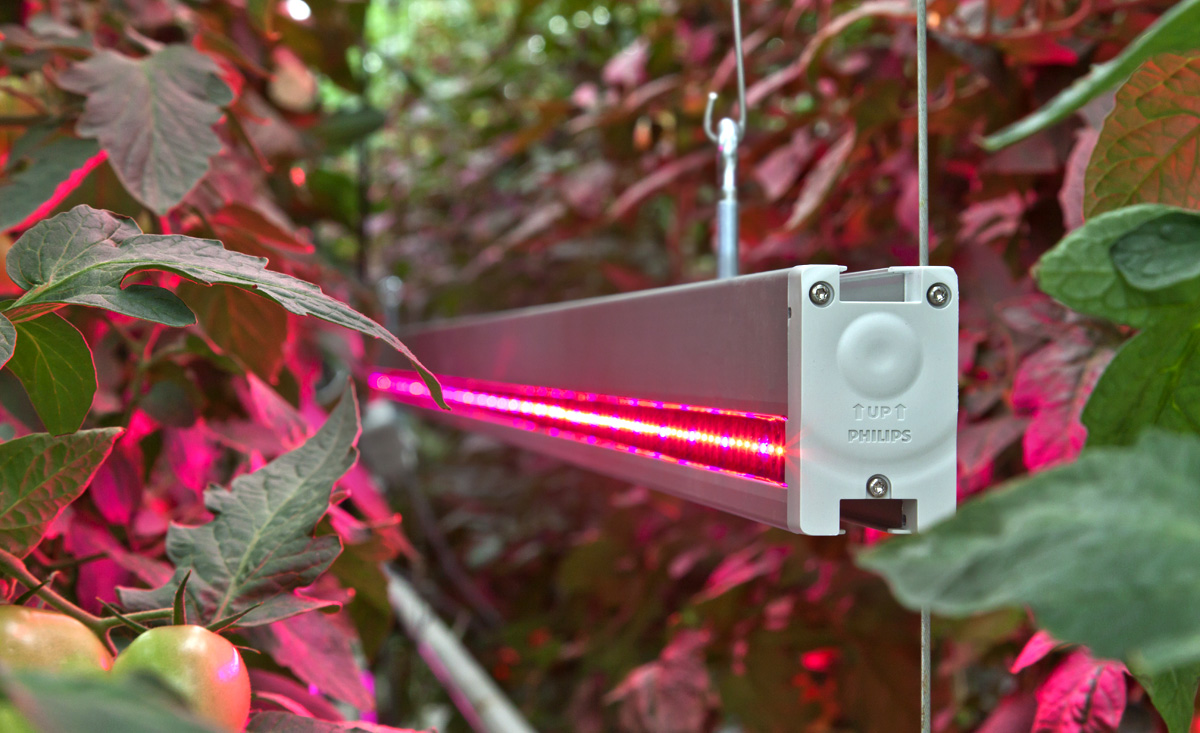Advantages of Phyto-lighting for the Winter Garden

A winter garden is not only a great way to extend the life of plants in the cold season, but also an opportunity to create a cozy corner of nature in your home. However, in order to maintain the health and beauty of plants in the winter garden, it is important to provide them with proper lighting. Phyto lighting is becoming more and more popular due to its effectiveness in providing plants with the necessary conditions for growth and development. In this article, we will look at the main advantages of phyto lighting for the winter garden.
1. Introduction
What is Phyto Lighting
Phyto lighting is specialized lighting that uses lamps with a light spectrum optimized for plant photosynthesis. Unlike conventional lighting, phytolamps emit light in the ranges most favorable for plant growth and development. The main components of phyto lighting are blue and red LEDs that stimulate various phases of plant development — from seed germination to flowering and fruiting.
Why is it Important to have the Right Lighting for the Conservatory?
The winter garden creates unique conditions for growing plants in the cold period of the year. However, natural light in winter is often not enough to provide plants with the necessary amount of energy for photosynthesis. Insufficient light can lead to slow growth, loss of color and even death of plants. The use of phytolamps allows you to create optimal conditions for the development of plants, compensating for the lack of natural light and providing the necessary spectrum for photosynthesis.
The main advantages of phyto lighting for the winter garden:
- Improved growth and development of plants: Phyto lamps provide plants with the necessary amount of light for photosynthesis, which promotes active growth and development.
- Energy saving: Modern phyto lamps, especially LED ones, consume much less electricity compared to traditional incandescent lamps, which allows you to significantly reduce electricity costs.
- Long service life: Phyto lamps have a long service life, which reduces the need for frequent replacement.
- Flexibility in use: Phyto lamps can be configured for different types of plants and their growth phases, making them a universal solution for any conservatory.
Phyto lighting is an innovative solution that allows you to create comfortable conditions for plants in your winter garden, providing them with everything they need for healthy growth and development even in the darkest winter months.
2. Advantages of Phyto Lighting

1. Improved Plant Growth and Development
Phyto-lighting provides plants with the optimal spectrum of light that is best suited for photosynthesis. Red light stimulates growth and flowering, while blue light promotes strong stems and leaves. Thanks to this, plants receive all the necessary conditions for healthy and rapid growth, even in conditions of limited natural lighting in the winter period.
2. Energy Saving
Modern phyto lamps, especially light-emitting diodes (LED), consume significantly less electricity compared to traditional incandescent or fluorescent lamps. This allows you to significantly reduce electricity costs, which is especially important when lighting is used for a long time in winter gardens.
3. Long Service Life
Phyto lamps have a much longer service life than ordinary lamps. LED phyto lamps can work for up to 50,000 hours, which reduces the need for frequent replacement of lamps and, accordingly, lowers lighting maintenance costs.
4. Flexibility in Use
Phyto lamps can be configured for different types of plants and their growth phases. Some models allow you to adjust the spectrum of light depending on the needs of specific plants. This makes phytolighting a versatile solution for a variety of plant types and growing conditions, including seedlings, flowering plants and even vegetable crops.
5. Preservation of Natural Plant Colors
Thanks to the correct spectrum of light, phyto-lighting helps preserve the natural colors of plants. This is especially important for decorative plants, which can lose their bright colors with insufficient lighting.
6. Improving the Quality of Fruits and Flowers
Phyto lighting promotes the formation of better quality fruits and flowers. Plants that receive enough light for photosynthesis have a higher content of nutrients, which positively affects the quality and taste of the fruits.
7. Minimal Effect on Temperature
Phyto lamps, especially LED ones, emit a minimal amount of heat. This allows you to maintain a stable temperature in the winter garden, which is important for creating optimal conditions for plants without the risk of overheating.
8. Environmental Safety
Phyto lamps do not contain harmful substances, such as mercury, which is used in some other types of lamps. They are safe for the environment and can be disposed of without harming nature.
3. Types of Phytolamps

There are different types of phyto lamps, each of which has its own characteristics, advantages and disadvantages. The choice of the appropriate type of lamp depends on the needs of specific plants, growing conditions and personal preferences of the gardener. Here are the main types of phytolamps:
1. Light-emitting Diode (LED) Phyto Lamps
Advantages:
- Energy efficiency: LEDs consume much less electricity compared to other types of lamps, which allows you to reduce lighting costs.
- Durability: The service life of LED lamps can reach 50,000 hours, which is significantly longer than other types of lamps.
- Low heat generation: LEDs emit a minimal amount of heat, which allows you to avoid overheating of plants.
- Flexibility in spectrum settings: Some models of LED lamps allow you to adjust the spectrum of light depending on the needs of plants at different stages of their growth.
Disadvantages:
- High cost: The initial cost of LED lights may be higher than other types of lights, but their longevity and energy efficiency will offset these costs over time.
2. Fluorescent Phyto Lamps
Advantages:
- Affordability: Fluorescent lamps are more affordable compared to LED lamps.
- Uniform lighting: They provide uniform distribution of light, which promotes uniform growth of plants.
- Low heat output: Fluorescent lights also emit a small amount of heat, which reduces the risk of overheating plants.
Disadvantages:
- Shorter lifespan: The lifespan of fluorescent lamps is shorter compared to LED lamps.
- Content of harmful substances: Some fluorescent lamps contain mercury, which makes them difficult to dispose of and can be dangerous for the environment.
3. High Pressure Sodium Phytolamps (HPS)
Advantages:
- High light intensity: High-pressure sodium lamps provide powerful light that promotes intensive plant growth.
- Efficiency at the flowering stage: They are especially effective at the flowering and fruiting stage, providing the necessary spectrum of light for this stage.
Disadvantages:
- High heat output: Sodium lamps generate a significant amount of heat, which may require additional cooling to prevent plants from overheating.
- High power consumption: They consume more electricity compared to other types of lamps, which increases the cost of electricity.
4. Metal Halide Phytolamps
Advantages:
- Full spectrum of light: Metal halide lamps provide a wide spectrum of light that is well suited for all stages of plant growth.
- High intensity: They provide a high level of light that promotes active plant growth.
Disadvantages:
- High heat output: Similar to sodium lamps, metal halide lamps emit a significant amount of heat.
- High power consumption: They also use a lot of electricity, which can increase lighting costs.
5. Induction Phyto Lamps
Advantages:
- Durability: Induction lamps have a very long service life, up to 100,000 hours.
- Low heat generation: They generate a minimal amount of heat, which reduces the risk of overheating plants.
- Efficiency: They are energy efficient, which allows you to reduce electricity costs.
Disadvantages:
- High cost: Induction lamps have a high initial cost.
- Limited spectrum: They may not provide the full spectrum of light needed by some types of plants.
4. How to Choose a Phyto Lamp for a Winter Garden

Choosing a phyto lamp for your conservatory can be a daunting task, given the variety of options available and the specific needs of your plants. Here are the basic steps to help you make the right choice.
1. Determine the Needs of Your Plants
First of all, you need to determine which plants you plan to grow in the winter garden and what their light needs are. Some plants need more light, others less. For example, flowering plants and vegetable crops often require more intensive lighting than ornamental plants.
2. Choose the Right Spectrum of Light
Phyto lamps come in different spectra, each of which has its own advantages. The main spectrums of light that plants need:
- Blue spectrum (430-450 nm): Promotes the development of the root system and vegetative growth.
- Red spectrum (640-660 nm): Promotes flowering and fruiting.
- Ultraviolet (UV) and Infrared (IR) spectrums: Can help protect against pests and diseases, and increase plant resistance.
For most winter gardens, the best option would be to use phytolamps with a full spectrum of light, which provide all the necessary wavelengths for plant growth.
3. Calculate the Required Amount of Light
Plants need a certain amount of light, expressed in lux or photosynthetically active radiation (PAR). For most plants in the winter garden, 5000-10000 lux is enough. Light meters can be used for accurate calculation.
4. Consider the Lighting Area
When choosing a phyto lamp, consider the area it should illuminate. Some lamps have a narrow dispersion angle and are suitable for point lighting, others provide a wider angle and are suitable for lighting large areas. Make sure your lamp covers all the area you need.
5. Pay Attention to Energy Efficiency
Phyto lamps differ in electricity consumption. Light-emitting diode (LED) lamps are the most energy-efficient, which allows you to reduce electricity costs. Fluorescent lights are also a good option, but they use more energy compared to LEDs.
6. Evaluate the Cost and Durability
The initial cost of a phyto lamp can vary, but it is worth paying attention to the life of the lamp. LED lamps have the longest service life (up to 50,000 hours), which reduces the need for frequent replacement. Fluorescent and sodium lamps have a shorter lifespan, which can increase their maintenance costs.
7. Check for Additional Features
Some phyto lamps have additional functions, such as adjusting the light spectrum, timers for automatic on and off, and the ability to connect to a smart home system. These functions can be useful for optimizing the process of growing plants.
8. Read Reviews and Compare Models
Before buying a phyto lamp, you should read the reviews of other users and compare different models. This will help you find the most suitable lamp in terms of quality and price.
5. Conclusion
Phyto lighting plays a key role in ensuring the healthy growth and development of plants in the conservatory. Thanks to the use of phyto lamps, you can create optimal conditions for plants even in the darkest winter months. LED lamps, due to their energy efficiency and durability, are the most popular choice among gardeners. Fluorescent, sodium, metal halide and induction lamps also have their advantages and can be used depending on specific needs and growing conditions.
When choosing a phyto lamp, it is important to consider the needs of your plants, choose the right spectrum of light, calculate the required amount of light and the area of illumination. It is equally important to pay attention to the energy efficiency, cost and durability of the lamp, as well as the presence of additional functions that can facilitate the process of caring for plants.
The use of phyto-lighting allows not only to support plants in the winter period, but also to achieve high results in the cultivation of decorative and edible crops. Properly selected phyto-lighting will ensure your plants healthy growth, a good appearance and a rich harvest, regardless of the weather conditions outside the window.















